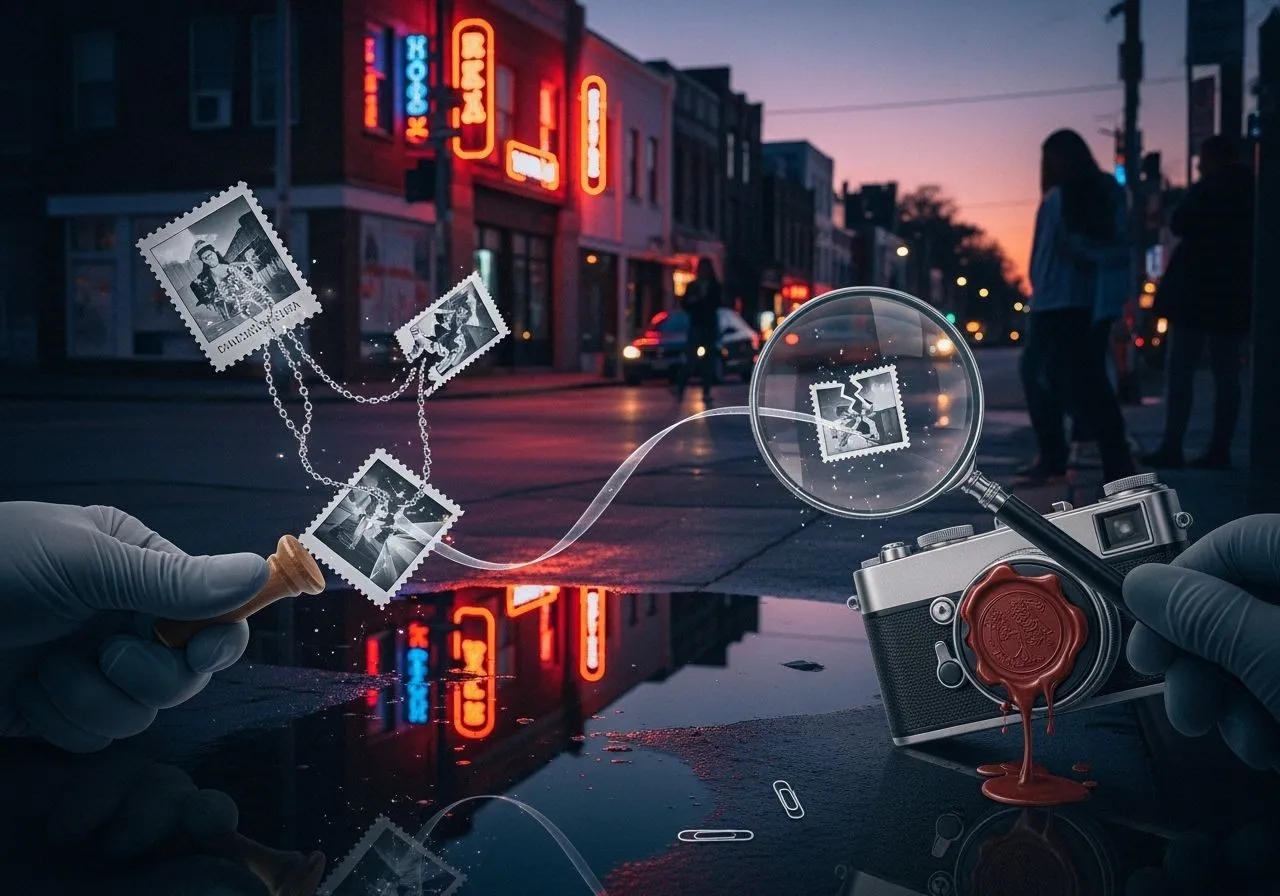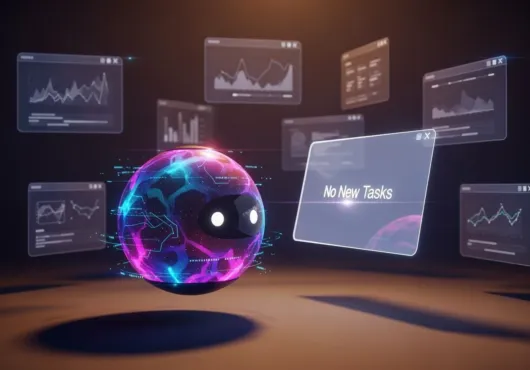“Proof is a protocol, not a vibe.”
Cold open
Once upon a time, the blur helped—shaky hands, bad lighting, a witness with nothing to gain. Now the fakes are cleaner than your conscience. The camera smiles, the pixels behave, and the most suspicious thing in the frame is how perfect it all looks. “Can you prove it?” isn’t snark anymore. It’s the only grown-up in the room.
Authenticity is a chain, not a file, and it must survive crops, compressions, and reposts.
Signing at capture proves origin, not truth—but it makes lies traceable and honesty portable.
Platforms that strip receipts are laundering attention. Carry the chain or admit it’s theater.
The authenticity tax (and who pays it)
Deepfakes didn’t just add bad media; they raised the price of being believed. For a clean, 10-minute validation flow, see Is This AI-Generated? Stop Guessing—Start Testing.
Authenticity used to be social—I know them; I was there. Now it’s operational. You pay in three currencies:
Time: capturing evidence right the first time (raw files, metadata, witness context).
Friction: hashing, mirroring, provenance stamps, controlled reposts.
Traction: careful proof loses to confident nonsense; you need receipts just to compete.
Proof is a supply chain
Evidence isn’t a JPEG; it’s a journey:
capture → edits → publish → share → reshare → public judgment
If any link rots, the whole chain stinks. You don’t need mystic detectors with horoscope-grade confidence scores. You need durable provenance that handles compression, cropping, and your cousin’s group chat.
Plain-English durability:
Capture preserves source context (device, timestamp, basic sensor data).
Edits append like tracked changes.
Platforms carry the chain instead of laundering it.
Viewers see a legible status: Original → Edited → Unknown.
Minimum Viable Provenance (MVP): Ship the Receipts, Not the Lab
Goal: a one-page receipt that survives crops, compressions, reposts, and your cousin’s meme habit.
What the viewer sees (human UI):
Status chip: Original / Edited (signed) / Unknown. No astrology percentages.
Source line: device, time window, capture app. Not home address, not blood type.
Chain preview: Capture → Edit → Publish with one-line notes on each hop.
“Raw access” toggle: if stakes are high, let me pull the raw or a cryptographic proof of it.
What the system keeps (machine glue):
Sealed manifest at capture (sensor basics, timestamp, lens).
Append-only edit log (crop from X:Y to A:B, blur mask regions, contrast +12, etc.).
Key hygiene: hardware-burned keys; recovery path that doesn’t require praying to a SaaS.
Survivability: signatures persist through export, AirDrop, screenshot, and re-encode.
Rules of the road:
Edits aren’t sins. They’re notes. Show them.
No silent scrubbing. If a platform strips receipts, label the result Unknown.
Open the door. Provide a way to verify off-platform without a doctorate.
Sign at capture (and don’t worship it)
Signing proves origin, not truth. You can cryptographically sign a lie. Great—now we know who lied and when. Still progress.
The boring details that actually matter:
Keys burned in hardware; no cloud handshake required.
A sealed manifest: sensor data, time, lens settings.
Each edit adds a signed note (crop here, blur there).
Signatures survive export, AirDrop, compression—and screenshots.
If your model “feels” sentient because it wrote a pretty sentence, relax—bugs beat metaphysics.
Cropping shouldn’t be a guillotine
People crop. People blur faces. People make memes. If provenance dies the moment you trim, the feature belongs in a museum. Receipts must degrade gracefully:
Keep a hash link to the parent.
Carry forward edit notes.
Use a dimmer, not an on/off purity badge.
Normalize “edited but signed.”
Reality testing: fast, dirty, defensible
You don’t need a lab—just repeatable checks a reasonable skeptic accepts. Use these in order; stop when you’ve got enough to publish without embarrassing yourself.
Source chain: who captured it first; where it appeared first; what got cropped.
Physics check: shadows, reflections, hand/object occlusion, lips/teeth/tongue consonants.
Context twins: find an earlier/later angle of the same scene; liars rarely shoot from two sides.
Compression tells: plastic skin, repeating noise fields, edge halos that float across moving objects.
Provenance stamp: if you made it, attach capture receipts before you share.
For the method, run the workflow in The AI Slop Field Kit? How to Grade Any Page For visual “smell tests,” sanity-check with Image Slop Index: Is It Factory? (yes, memes are the new test range).
Counter-Forensics: What Liars Actually Do Next
Liars read the same playbooks. Design your checks for their habits, not their press releases.
Confidence theater: “97% genuine” badges with no chain. Treat as decoration.
Context amputations: cropping out clocks, exits, reflections. Always ask “what’s one inch outside this frame?”
Noise laundering: re-encode twice to smear tells; run a stylize filter so everything looks “artsy.” Compare against a known-clean encode.
Multi-post misdirection: three low-stakes truths to earn trust, one high-stakes lie to spend it. Don’t sample one post—sample patterns.
Witness ventriloquism: fake group chats and Slack screencaps with fonts half a point off. Recreate the flow; audit cursor/scroll physics.
Anti-forensic watermarking: adding fake provenance badges that don’t resolve to anything. Click them. If there’s no manifest, it’s costume jewelry.
Your counter-moves:
Chain over claim. If it can’t show its parents, it’s an orphan.
Twin hunt. Find the same scene from another angle/time. Liars are lazy about coverage.
Physics budget. Track shadows, occlusion, and lips on consonants. They crack first.
Receipt stash. Keep your own “before” folder. You don’t argue— you publish.
Screenshots, audio, and the rest of reality
Same discipline, different angles.
Screenshots
Fullscreen capture with the system clock visible.
Avoid stitched Franken-screens unless you show the stitches.
Save the raw and the share-sized cut. Name sanely: YYYYMMDD_app_context_action.png.
Screen recordings
Start a few seconds early; narrate context in the first five seconds.
Keep mic on so ambient audio and room impulse ride along.
If the app shows cursor/scroll physics, use it; fakes botch physics.
Audio
Keep the WAV. MP3 smooths lies.
Listen for breathing artifacts, plosives, and impossible room echoes.
If challenged, publish a short “room impulse” clip recorded at the same time.
Livestreams
Enable platform-native recording and an off-device capture.
Pin a short description with location/time and a witness handle (if safe).
When the fallout is personal, treat it like an incident: triage, contain, document, escalate—the human SRE you outlined in SEV-2 Protocols — Incident Response for the Self.
Usable doubt (design for humans, not cryptographers)
Most “authenticity” UIs look like a PhD dissertation glued to a share button. We need readable doubt:
A tiny icon for Original, one for Edited (signed), and one for Unknown.
Tap-through to the chain—camera, edits, poster—inside the app.
A visible “raw access” toggle on high-stakes posts.
Clear language; no cosplay confidence intervals.
For messenger tricks and polished nothing, see the culture lab via Average Is Automated — The Case for Weaponized Weird (why sameness cheats your gut).
Platforms: carry the receipts or admit you’re theater
If your pipeline strips signatures, you’re a laundering service with a share button. Minimum adult behavior:
Preserve capture/edit manifests end-to-end (no silent scrubbing).
Show a human status at a glance: Original → Edited → Unknown.
Let users tap the chain without leaving the app.
Prefer intact provenance when stakes are high.
Publish appeal SLAs that include artifacts, not vibes.
Privacy isn’t the enemy of proof
EXIF oversharing is how people got doxxed; learn from that. Keep proofs, prune identifiers. Reveal location/time only if the shooter opts in. Redactions should add a signed note—“face blurred here by X at Y”—not rip out the spine. Privacy and provenance aren’t enemies; they’re roommates with a chore chart.
Social failure modes (the part nobody can patch)
Receipts don’t fix motivated reasoning. People will ignore proof when it’s inconvenient and embrace garbage when it flatters them. The job isn’t to mind-control belief; it’s to make lying expensive and honesty cheap. Reality testing is a civic muscle. Platforms can stop skipping leg day.
For the identity hangover—when your face, voice, and text spin off without you—start with Digital Doppelgängers: How AI Is Recreating You Online.
The Mind’s Authenticity Tax (a.k.a. The Psychological Weight of the Receipt Chain)
You don’t just carry a phone—you carry a future defense exhibit. “Shoot wide, save raw” sounds like advice; it feels like pre-crime. Every moment becomes two moments: the thing itself, and the meta-task of proving it later. That split attention taxes you. Small at first—an extra second to frame a shot, a note to export the raw—until it isn’t. You start narrating your life like a defendant with decent odds.
Pre-emption eats headspace. You think like a hostile auditor: did I get the screen with the system clock? Did I save the WAV, not the MP3? Is there a second angle if someone calls this fake? Nothing happened yet, but you already paid cognitive rent. And the rent never drops.
Then trust dies by paper cuts. Not dramatic betrayal—casual doubt. A friend sends a clip. You don’t laugh; you ask for the source. You tell a story and someone reflexively says, “Can you prove it?” They’re not wrong. You’re not offended. But something human corrodes when social trust must clear procedural trust before it counts. Relationships become low-stakes tribunals. Memory is suspicious unless notarized—hence the need to occasionally A/B Test My Memories — Audit the Recall.
Worst is the asymmetry. Institutions arrive with notarized audit trails; you arrive with a screenshot. They have legibility by default. You have plausible deniability against yourself. Power loves paperwork because paperwork loves power. You can build your own chain—do it—but don’t miss the feeling underneath: outgunned by formality, even when you’re right. That’s the real authenticity tax: not just proof, but the creeping belief that without proof you don’t exist. When the stress spikes, practice the human SRE you wrote—SEV-2 Protocols — Incident Response for the Self—or go dark on purpose with Kill-Switch Sabbath — Offline Kit.
The Creator’s Paradox: When AI Is Your Pen, Not Your Enemy
Some of your most honest work will be synthetic at the edges. You sketch with a model to find composition. You use generative fill to erase a mistake you’d fix on location if the sun weren’t dying. You pilot the system like a steadicam—steady hand, your vision. The result sings. Then comes the chill: will this be read as counterfeit?
Provenance becomes a creative choice. You can sign the chain and say, “Yes, I used the machine, here’s where.” That can read like a scarlet letter to purists—or like a maker’s mark to adults. The point isn’t to confess sin; it’s to declare authorship in the only language the future respects: a trail. If the tool includes a model, the receipt should say so. Not because you owe anyone purity, but because truth ages well.
The machine brings ghosts. Hallucinated hands. Gravity-agnostic fabric. Micro-symmetries no lens would love. Some you’ll fix; some will slip through. That’s the paradox: AI can make your work better and salt it with tells only a deep audit will spot. The question isn’t “did you use AI?” It’s “did you direct it?” For the creative trapdoor, see The Director Problem — Video Models Finally Listen, and That’s the Trap. For steering your brand voice without turning into a mannequin, there’s Meet the Algorithm Inside My Head. And if sameness is choking your gut-check instinct, revisit Average Is Automated — The Case for Weaponized Weird.
The AI Detector Illusion: Why Mirages Are a Bad Product
Detectors feel like seatbelts: click once, be safe forever. They’re not. They’re radar guns in a world where roads rewrite themselves nightly. A detector learns the current generation’s quirks—the texture smear, token cadence, statistical “accent”—and a new model ships with those quirks sanded off. Cat, meet mouse. The mouse writes firmware now.
“Confidence: 97% AI.” That number looks like truth in a lab coat. It isn’t. A detector’s confidence measures pattern match against its training set, not “realness.” Change the generator, sampling, post-process, or watermark filter—watch the confidence swing. That’s not fraud; that’s statistics doing its job: approximation.
Worse: generators can be fine-tuned to remove their own fingerprints. The only way detectors “win” is if generators cooperate (leave stable tells) or regulators force a watermark that can’t be stripped without breaking the media. In practice, neither holds at scale. Your detector becomes a weather app for yesterday. So don’t outsource judgment to a shiny probability. Use detectors as hints, never gavels—and build systems where the chain, not the hunch, carries weight.
The boring demo that wins trust
Skip the AR theater. Show this: capture a photo, go offline, crop it, blur a face, AirDrop it, post it, screenshot it—the status stays legible the whole way. No prayers. No “feature not supported.” Just receipts that survive everyday chaos. That’s the product. Everything else is a pitch deck.
Tools & plays (reader-level, not dev cosplay)
Keep it boring; boring wins appeals.
Is This AI-Generated? Stop Guessing—Start Testing — the 10-minute validation workflow.
Image Slop Index: Is It Factory? — quick visual artifact sniff test.
SEV-2 Protocols — Incident Response for the Self — triage and escalate like a human SRE.
A/B Test My Memories — Audit the Recall — custody of your own past.
Kill-Switch Sabbath — Offline Kit — scheduled sanity when the feed won’t let go.
Reality test table
| Claim Type | Likely Failure Mode | Quick Sanity Test | Cost If Wrong | Receipts To Collect |
|---|---|---|---|---|
| Breaking video clip | Synthetic splice; context crop | Reverse-search key frames; check shadows/reflections | Reputational dogpile | Original + basic EXIF; capture stamp; cross-angle link |
| Brand “official” statement | Fake card; wrong tone/typo | Compare to newsroom/RSS; typography audit | Financial/PR whiplash | Archive of newsroom; signed PDF or header export |
| “Leaked” chat/screenshot | Fabricated UI; font mismatch | Recreate the flow; watch cursor/scroll physics | Legal exposure | Full-screen capture w/ system clock; hash + external timestamp |
| Audio confession | Voice clone; looped bed | Listen for plosives/breathing; room reverb continuity | Irreversible harm | WAV original; short room impulse clip; witness declaration |
| Scientific “result” image | Synthetic microscopy; re-gen plots | Raw data DOI/repo; replot from source | Misinformation spread | Link to raw dataset; commit hash; author confirmation |
Case vignettes (receipts > virality)
The clip that cleared a worker: two-angle upload + capture stamp ended a pile-on quietly. Charm wasn’t virality; it was verifiability.
The “brand statement” that wasn’t: font audit + newsroom archive beat 10k retweets of a fake.
The cloned confession: background loop artifact + missing plosives; raw file request ended the circus.
Build an evidence habit (without turning your life into a notary)
Treat receipts like hygiene.
Shoot wide, save raw: crop later; keep the original.
Stamp once, mirror twice: stamp on capture; mirror to one place you control and one you don’t.
Name like a robot: YYYYMMDD_location_subject_take.ext.
Write a 5-line timeline on impact: who/what/when/where/why—same day.
Publish with receipts: for high-stakes posts, link one quiet evidence page with raw, stamp, and context.
When relationships bend under doubt, sanity-check the human side with The AI Dress Rehearsal for Divorce or reset expectations with Reality Patch Notes for the Self.



